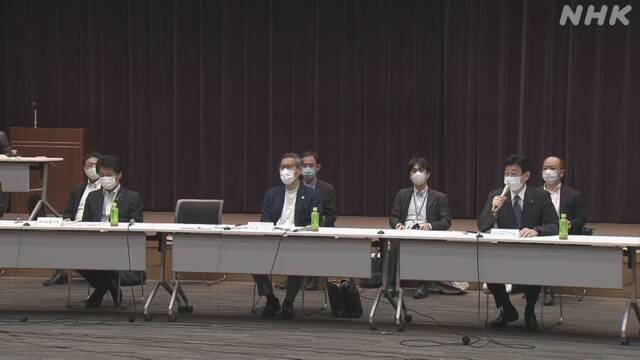A government subcommittee on measures against the new coronavirus was held, and experts presented a proposal summarizing new indicators for future decisions on the cancellation of the state of emergency.
Assuming that the number of infected people has been decreasing for about two weeks in a row, the number of patients with moderate illness and home care patients, and the number of cases where emergency transportation is difficult are decreasing. And then.
According to the proposal presented by experts at the subcommittee on the 8th, when deciding to cancel the state of emergency, it is necessary to place more emphasis on the medical situation than ever before. He points out that it is necessary to consider two aspects, "load on medical care" and "load on general medical care".
Then, assuming that the "number of newly infected people" has been steadily declining for about two weeks as a specific index when deciding to cancel the declaration,
▽ "bed usage rate" and "severe beds" "Usage rate" is less than 50%,
▽ Percentage of people who can be hospitalized among all medical treatment people "Hospitalization rate" is improving,
▽ "Number of severely ill patients" and "Middle-sick patients" The number of people is continuing to decline, and
especially in metropolitan areas, the total number of people who are coordinating home care and medical treatment is steadily decreasing toward the level of about 60 per 100,000 population. What you are doing
.
In addition, as an index to see the "load on general medical care", "cases where emergency transportation is difficult" is declining in metropolitan areas.
When deciding to release the infection, it is necessary to consider the intentions of the local government along with these indicators, and to make a careful judgment in case the infection will re-spread after the declaration is released.
In addition, the subcommittee will propose a new way of thinking about the "stage" that indicates the status of infection and medical care, toward the time when the vaccine will be distributed.
At the subcommittee on the 8th, discussions will be held based on this proposal, and Chairman Omi will meet in the afternoon to explain new indicators.
Minister of Health, Labor and Welfare Tamura "I want to proceed with the development of temporary medical facilities, etc."
At the beginning of the subcommittee, Minister of Health, Labor and Welfare Tamura said, "Although the number of people infected by this big wave is declining, the number of seriously ill and dead people is still very high, so we must continue to be careful. I don't know when it will start to rise again, and I would like to work with prefectures to improve the medical care provision system, such as temporary medical facilities, toward the winter season. "
Minister of Economic Revitalization Nishimura "What we should do now is strengthening medical care"
At the beginning of the subcommittee, Mr. Nishimura, the minister in charge of economic revitalization, said, "The number of newly infected people is declining nationwide, but the number of seriously ill people is still at an extremely high level. With 163,000 people nationwide, the medical system remains strict and we must respond with a sense of crisis. What we should do now is to strengthen medical care, and we would like to work in cooperation with local governments. "
On that basis, regarding the handling of the state of emergency, which is due on the 12th of this month, "the idea that it is necessary to make a judgment while taking into account the indicators of those who are undergoing home medical treatment and hospitalization adjustment after repeated discussions with experts was organized. I'm listening. While communicating with each prefecture, I would like you to analyze and share the medical care provision system, etc., and discuss the response at the "Basic Coping Policy Subcommittee". "

